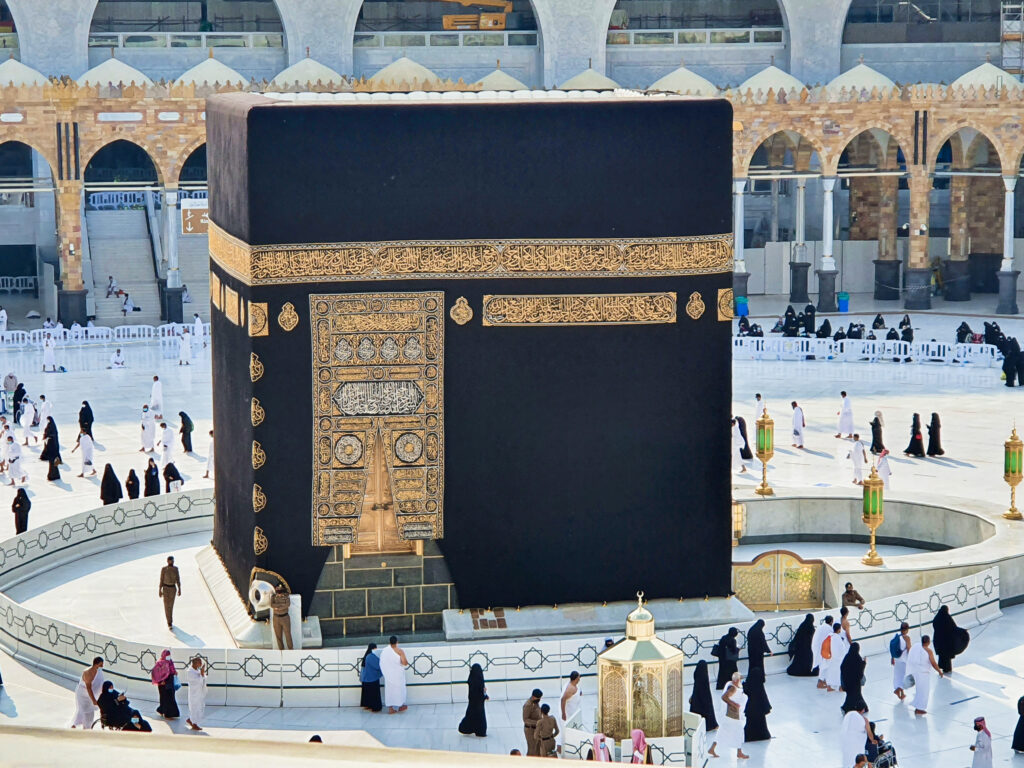Explore the origins, historical spread, and current global influence of Islam. Understand its emergence, key teachings, documented evidence, and the evolution of Islamic civilization.

🕌 Understanding Islam Beyond Headlines
Islam is not just one of the world’s major religions—it is a powerful spiritual, cultural, and historical force that has shaped civilizations for over 1,400 years. With over 1.9 billion followers, Islam is the second-largest religion globally and continues to influence geopolitics, culture, science, and philosophy.
This article provides a fact-based, referenced overview of:
- The origin of Islam
- The life of Prophet Muhammad ﷺ
- Spread of Islam through the centuries
- Documented evidence and scriptures
- Islam’s present global status
📜 The Origin of Islam
📍 Where and When Did Islam Begin?
Islam began in the 7th century CE in the city of Mecca (Makkah), located in the present-day Kingdom of Saudi Arabia.
🕋 The Life of Prophet Muhammad ﷺ
- Born in 570 CE in Mecca, into the Quraysh tribe
- Received the first revelation at age 40 through Angel Jibreel (Gabriel) in the Cave of Hira
- The revelations continued for 23 years and form the Qur’an, the holy book of Islam
➡️ Documented Evidence:
The Qur’an, preserved in classical Arabic, remains unchanged since its revelation, with the earliest surviving manuscripts including:
- The Topkapi Manuscript (Istanbul)
- The Sana’a Manuscripts (Yemen)
- The Tashkent Manuscript (Uzbekistan)
(British Library)
📖 Core Teachings of Islam
The Five Pillars of Islam form the foundation:
- Shahadah: Declaration of faith
- Salah: Five daily prayers
- Zakat: Charity to the poor
- Sawm: Fasting in Ramadan
- Hajj: Pilgrimage to Mecca once in a lifetime (if able)
➡️ Source: Qur’an and Hadiths
🌍 The Early Spread of Islam (7th to 10th Century)
📈 Timeline of Expansion
| Period | Region | Event |
| 622 CE | Medina | Hijrah – Migration from Mecca to Medina (start of Islamic calendar) |
| 632 CE | Arabia | Unification under Islam by Prophet Muhammad |
| 661 CE | Persia, Levant | Rashidun Caliphate expands east and west |
| 750 CE | Spain to India | Under Umayyads & Abbasids, Islam becomes global |
🌐 Key Civilizational Contributions
Islamic civilization advanced:
- Medicine (Ibn Sina’s Canon of Medicine)
- Astronomy (Al-Battani, Al-Tusi)
- Mathematics (Al-Khwarizmi – inventor of algebra)
- Architecture (Mosques, domes, geometric art)
➡️ Refer: UNESCO – Islamic Science
🗺️ Major Islamic Empires and Their Legacy
- Umayyad Caliphate (661–750 CE) – First Islamic dynasty; spread into Spain (Andalusia)
- Abbasid Caliphate (750–1258 CE) – Baghdad as a center of science & learning
- Ottoman Empire (1299–1924) – Controlled Southeast Europe, Middle East, North Africa
- Mughal Empire (1526–1857) – Flourished in the Indian subcontinent
- Safavid Empire (1501–1736) – Established Twelver Shi’a Islam in Iran
➡️ Source: Cambridge History of Islam
📚 Historical Documentation and Records
- Qur’anic Manuscripts: Oldest copies preserved globally
- Hadith Collections: Sayings of the Prophet compiled by scholars like Bukhari, Muslim, Tirmidhi
- Treaty of Hudaybiyyah (628 CE): Earliest diplomatic document in Islamic history
- Letters of the Prophet to emperors (Heraclius of Rome, Khosrow of Persia) — documented in classical Islamic texts and non-Muslim sources
➡️ Evidence in: Islamic Awareness Manuscripts Collection
🧭 Islam’s Expansion Into Different Regions
✦ Africa
- Spread via trade and Sufi missionaries
- Flourished in Mali, Songhai, and Egypt
✦ Europe
- Islamic rule in Al-Andalus (Spain) from 711 to 1492 CE
- Influenced European Renaissance via science and philosophy
✦ Asia
- Entered India by 7th century; flourished under Delhi Sultanate and Mughals
- Spread to Indonesia, Malaysia via peaceful trade and preaching
📊 Present-Day Islam: Global Reach and Demographics
| Region | Muslim Population |
| Asia-Pacific | 1.0 billion+ |
| Middle East-North Africa | 400 million+ |
| Sub-Saharan Africa | 300 million+ |
| Europe | 44 million |
| Americas | 10 million+ |
➡️ Source: Pew Research Center – Global Islam
🔄 Major Sects in Islam
1.
Sunni Islam (85–90%)
- Majority of Muslims
- Follow the four schools of jurisprudence: Hanafi, Maliki, Shafi’i, Hanbali
2.
Shia Islam (10–15%)
- Primarily found in Iran, Iraq, Lebanon
- Believe in the succession of Imams from the family of Prophet Muhammad
➡️ Learn more: BBC Religions – Islam
🌐 Islam in the Modern World
Islam today is:
- Practiced in over 180 countries
- One of the fastest-growing religions, especially in sub-Saharan Africa and Europe
- A subject of dialogue, reform, and education in interfaith and global peace forums
Modern movements include:
- Islamic finance and banking
- Islamic charities and humanitarian work
- Digital da’wah and online Islamic education platforms
💬 Common Misconceptions About Islam
| Myth | Fact |
| Islam promotes violence | Islam literally means “peace through submission” and condemns extremism |
| Muslims worship Muhammad | Muslims worship only Allah (God) and see Muhammad as His Messenger |
| Islam is Arab religion | Only ~20% of Muslims are Arab; largest population is in Indonesia |
📘 Final Thoughts
Islam is a faith deeply rooted in monotheism, knowledge, and community. Its origins in the deserts of Arabia led to a civilizational force that shaped history across continents.
Despite misconceptions, the historical and documented evidence affirms its authentic origins, widespread influence, and profound teachings that continue to inspire nearly 2 billion people today.
📎 References & Documentation


